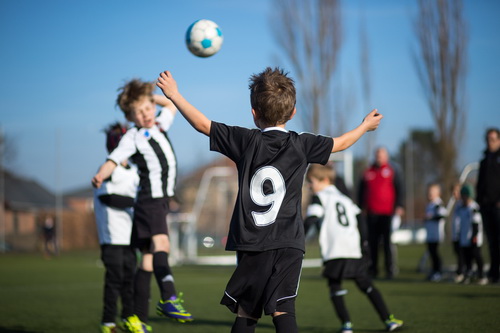The auditory processing disorder (APD) which is also known as central auditory processing disorder (CAPD) is a condition where people can hear sound though how the brain translates those sound is disrupted which result to an unclear message. In contrast to people with hearing impairment, people with CAPD have normal hearing but they have a hard time processing the information they hear in the same way as others because their ears and brain don’t fully coordinate. This is the reason why it is called a processing disorder. This develops at a very early age as CAPD affects about 5% of school-aged children and should not be taken for granted.
There are several signs and symptoms with regards to APD which include of course, difficulty in hearing, poor auditory memory, speech delay from a young age, difficulty in following instructions or directions, exhibiting attention issues and more can be found by seeking a professional’s aid upon showing these early signs and symptoms regarding APD. The causes of CAPD are unknown which makes it harder to keep track off. This is the reason why parents need to be vigilant and attentive as this may develop during their child’s growth.
Although not a sure-fire approach to treating children with APD, parents are given several strategies to overcome such struggle. Providing a peaceful, organized environment and lifestyle proved to be very helpful during their growth. Building their self-esteem is also rather advantageous as they have no clear understanding of CAPD. Central Auditory Processing Disorder Treatment exists and this should also be taken into consideration along with Auditory Integration Listening Programs which is available for today.
A lot of individuals share the same sentiments and feeling with regards to ADP and CAPD. It can be heartbreaking learning that your child is suffering from this type of processing disorder. With that said, it is good to hear that people were able to express their concerns and feedbacks over the internet and the online community has been very helpful in giving further insights and understanding about auditory processing disorder. Social media websites is able to easily share vital information and spread it around the community in a short amount of time. This allows for a healthy conversation and discussions about CAPD.
Back then people would require forming an active group and meet physically to share their experience with regards to a particular issue or concern. However today, the process is made much easier as you can engage and ask personal questions to the professionals through the use of several social media websites. Twitter has been very helpful in providing the necessary information with regards to CAPD and doctors, institutions and even parents are able to express freely their opinions and ask feedback from others in return.
Claire Felices social media manager of social media agency Atomic Digital shows how parents can best use social media to connect with not just other parents, but experts in that field. Here is a list of doctors and professionals as well as regular individuals who share their thoughts about APD:
- The Sensory Spectrum
@SensorySpec
https://twitter.com/SensorySpec
This page links to the newest research, news, tips and activities for kids with Autism Aspergers and Sensory Processing Disorder which are updated on a regular basis.
- Francoise Nicoloff
https://www.facebook.com/TomatisAustralia
Director of the Tomatis Method in Australia & psychologist for over 30 years – Sydney, treating auditory processing, ADHD, speech delay, autism, depression. She shares news, pictures and videos about auditory processing disorder.
- Vicki Kirwin
@KidsAudiologist
Paediatric audiologist & advisor @NDCS_UK. News on childhood deafness & children’s audiology are shared and can be found at her twitter page.
- NLASLPA
@nlaslpa
https://twitter.com/nlaslpa
Represents over 100 Speech-Language Pathologists (SLPs) and Audiologists (AUDs) in Newfoundland and Labrador, NLASLPA is a not-for-profit association that post news and informative pictures with regards to CAPD.
- Tammy Pluck
@SunnyCMIB
https://twitter.com/SunnyCMIB
A mother of two children, you can find post about fitness and health along with taking care of children.
- Able Families
@AbleFamilies
https://twitter.com/AbleFamilies
A social networking, advice & support as well as a resource & information page for South African families challenged by disability.
- NY Gifted Education
@NYGiftedEd
https://twitter.com/NYGiftedEd
This page revolves around actively exploring all the school and enrichment options available for gifted children in NYC which includes finding a suitable institution with children who have ADP.
- The Kildonan School
@KildonanSchool
https://twitter.com/KildonanSchool
Another educational institution which is one of NY’s premier independent schools for students with dyslexia which is oftentimes associated to auditory processing disorder.
- KidsHealth
@KidsHealth
https://twitter.com/KidsHealth
The world’s #1 most-visited website devoted to children’s health, Kids Health is written for parents, educators, kids, and teens with an active and growing number of followers.
- Brain Balance SF
@BrainBalanceSF
https://twitter.com/BrainBalanceSF
This page represents an after school learning centers that help children with learning & behavioral disorders such as ADHD, Dyslexia, Autism, & other Learning Disabilities.
Indeed social media has been a very effective and powerful tool in sharing vital information to the online community. Rare and uncommon diseases and disorders aren’t usually given its clear overview and background information unless you manually look for it. This can take one a fair amount of time in order to complete. It is good to hear that ADP and CAPD have received its fair share of the spotlight with the help of social media today. This helps remove the social stigma behind ADP and CAPD as well as other related disorders as a huge number of people are given a clearer understanding in an effort to answer the general issues and concerns revolving around them. Reach out to several social media network and find the much needed help over the internet.




